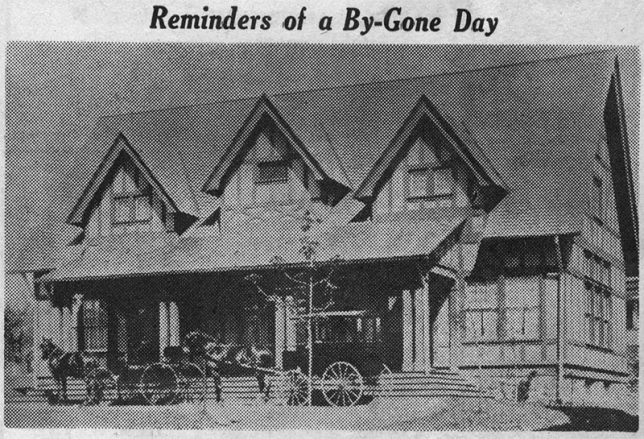“The Suburban” this week begins publication of a series of articles under the caption “Your Town and My Town”, written by a well-known resident of Wayne, who has been for many years an integral part of our community life. “Your Town and My Town” will give the historical background of the cultural associations which have made Wayne and Radnor township famous along the Main Line. The writer’s commentaries on these various institutions should prove interesting alike to our older and newer residents.
The Saturday Club
In April, 1890, what is now the most powerful and influential organization of women in the world was founded – the General Federation of Women’s Clubs with a membership at present exceeding three million women in America alone. Affiliated membership in foreign countries raises the total to more than five million women.
The Saturday Club of Wayne was already more than four years old when it became one of the first groups to enter the General Federation. Founded in February, 1886, it was the second Departmental Club in Pennsylvania, the first being the New Century Club of Philadelphia. When the State Federation of Pennsylvania Women’s Clubs was organized in 1895, a charter member of the Saturday club, Mrs. Ellis Campbell, now Mrs. William Henry Sayen, became its first president. Mrs. Sayen, one of the founders of the Saturday Club was also one of its early presidents and during the past sixty-tree years has always maintained an active interest in the Club for whose existence she was so largely responsible.
The Junior Saturday Club was founded in 1907 as one of the first Junior organizations, not only in Pennsylvania, but in the entire United States.
The names of the first members of the “ladies organization,” which was later to become the Saturday Club of Wayne, are still legible in a well-worn, black bound book. They are written in an exquisitely fine hand on age-yellowed leaves with an ink now dim with time.
“On February 16, at four in the afternoon, nine of the twelve ladies invited to be present, met in the library room, Wayne Hall, where after some formal remarks, Miss Markley was invited to preside.” But even before this “on a sunny Saturday afternoon, there gathered in Mrs. Sayen’s parlor several bright congenial women, who, over steaming cups of tea, dared discuss the subject of Women’s Clubs – then almost a tabooed subject.” (From an article written for the SUBURBAN of March 29, 1907, by Mrs. A. A. H. Canizares on the occasion of the 21st Saturday Club Birthday Party.)
The first order of business at the meeting of February 16 was the election of officers for the temporary organization. Mrs. James Campbell was elected president with Anna Markley and Mrs. P.W. Ver Planck as vice presidents, Mrs. G. E. Abbott as secretary and Miss Helen Erben as treasurer. In addition to these officers, others, who made the original twelve were Mrs. W. H. Sayen, Miss Phillips, Mrs. Peterson and Mrs. Henry Pleasants, Jr. A little later “there were nominated for membership six other ladies all of whom gave great vitality to the infant club. They were Miss Matlack, Mrs. Stocker, Mrs. E. L. Campbell, Miss M. Rogers and Mrs. Fallon.”
So great was the enthusiasm that club meetings at first took place even during the summer months. Programs were usually in the form of papers written by the members. In one meeting Mrs. Abbott had prepared a paper on chemistry, but “there being so few present it was decided by motion to give the paper into the hands of the entertainment committee to be used again.”
Different “sections” of the club work included science, art, music, literature and household. There were papers on such diversified subjects as “Climatology,” “Materialism,” (so popular it was repeated a second time by Dr. Abbott) and “Geology of the Surrounding Country.” There was also the reading of a few extracts from a book, “Plumbing and Doctors,” and there was a lecture on “Emergencies” by Dr. Egbert and one on Nursing,” by Dr. Wells.
There is an occasional mention of tea, the first at the meeting of October 9, 1886, when “The Club meeting was called to order by the president while presiding at a table, laden with pretty little china cups from which was to be sipped the fragrant tea.”
To be continued

